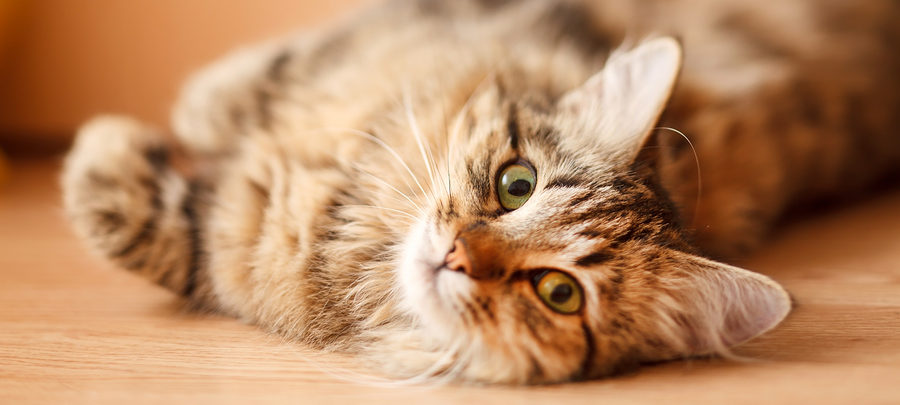In a previous post I talked about how cats’ very different senses mean they do not experience the world the same way we do. That is certainly true for a cat’s superior sense of hearing. Cats can hear a mouse squeaking underground or a cockroach scurrying inside the wall. Their amazing ears enable them to locate their prey by sound—something most people forget when they’re playing with their cat and offer no auditory stimulation.
Cock an Ear
Cats can hear over a range of about 10.5 octaves (among the broadest for any mammal, including dogs). By contrast, humans hear about 9.3 octaves. Cats’ hearing is especially sensitive at the middle frequencies; when they’re staring at the wall, they are probably hearing something moving inside it. That means your cat can hear you when you whisper, so no need to shout. It also means cats are easily distracted, and easily startled, by sounds. And easily excited by the kinds of sounds prey animals make, like squeaks and rustling noises.
Because they can hear at the ultrasonic level, mechanical whining noises from things like refrigerators, air conditioners, fans, and vacuum cleaners may be especially annoying.
Their large pinnae help collect and pinpoint sounds, especially higher frequency sounds (think mouse squeaking). The ears swivel up to 180 degrees and can rotate independently, like two radar dishes. As a result, cats are very efficient at discriminating between two different sounds coming from sources only three inches apart, which helps them track movement of prey in dim light.
Eye Bright
Their eyes are also specialized to maximize light input. Cat have more rods (cells sensitive to low light) in their eyes and fewer cones (cells sensitive to bright light and color). The distance between the cat’s pupil and the retina is short, so very little light is scattered as it moves through the eye. Immediately behind the retina is a layer of cells, called the tapetum lucidum, which reflects unabsorbed light back toward the visual receptors. This is what makes cats eyes glow when light is shined on them.
The cat’s pupils can narrow to a slit and open to almost the full size of the eye. When a cat’s pupil is fully opened, the illumination of the retina is equivalent to that found in bats and badgers.
Vision Quest
The cat’s eyes are anatomically large and set forward, giving them a wide field of binocular vision (the area both eyes can see) of about 100 degrees, plus additional peripheral vision of 50 degrees on each side—for a total field of vision of a whopping 200 degrees. The human total is about 170, with about 100 degrees of that peripheral vision. But it’s likely that cats’ peripheral vision is way keener than ours.
Knowing that cats can see farther to the sides and behind them, think about how it can startle your cat when you approach from behind, reach for her, or move things over her head or behind her.
The structure of the feline eye is optimized to detect rapid movement, and cats can make quick eye movements in response to fast-moving objects. However, they’re not as good at detecting slow movements.
Cats pay a price for their ability to detect movement and see in low light, though. They have relatively poor sensitivity to color; they’re better able to see in the spectrum of shorter light waves (green and blue) and less able to see in longer ones (red).
Visual Aids
The position of the eyes on the head means cats cannot focus well directly in front of them, so they’re also slightly myopic; if cats could read, they would need reading glasses. They focus best on objects between 7 and 20 feet away. They’re also slow to transfer their focus from things that are near to things that are distant, and vice versa.
Because cats can’t see well directly in front of them at close range, they use their whiskers to augment their close-up vision. That’s why their whiskers rotate forward when they’re playing with a toy. It’s also why cats often swat at objects to establish their exact position, and why it seems like they can’t find the treat you’re holding out right in front of them.
Those whiskers are only part of your cat’s tactile equipment. Cats have touch receptors on their skin, paws, and the whisker follicles. Touch is the earliest sense developed in kittens. In fact, it develops about five weeks before a kitten is born, and the balance organ is functional about a week before birth.
Whiskers, or vibrissae, are long, thick hairs set deep into the tissue. They’re on the muzzle, the sides of the head, above the eyes, and at the wrists and ankles. Whiskers provide sensory information about the position of the cat’s head and legs relative to nearby objects and are so sensitive that they can detect changes in air currents. Sensory input from whiskers is coordinated in the brain with visual information.
The paws are highly sensitive, with highest density of receptors in the body found between the foot and toe pads. Highly sensitive specialized cells in the soft tissue at the base of each claw produce signals about the degree of extension and sideways displacement for each claw. Cats use this information to manipulate prey, investigate new items, walk on narrow surfaces, and maintain their footing while leaping.
Understanding how much sensory information is taken in through the claws that is vital to the way cats move through their world, imagine what is lost to a declawed cat.








